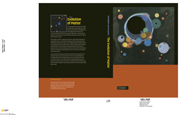Book contents
- Frontmatter
- Contents
- Introduction
- Part I The elements
- Part II Early solar system: nebula formation, evolution and lifetime
- Part III Accretion of the Earth
- 14 Introduction to the planetary system, Earth and Moon
- 15 Introduction to planetary accretion
- 16 Earth accretion: the giant impact(s)
- 17 The post-accretion silicate Earth: comparison with meteorites
- 18 Core segregation
- 19 Heavy “crust” on the top of the core
- 20 The early atmo-hydrosphere
- 21 Light from the Moon …
- Part IV Global evolution of the Earth
- References
- Glossary
- Abbreviations
- Meteorites, rocks and minerals
- Index
19 - Heavy “crust” on the top of the core
Published online by Cambridge University Press: 04 September 2009
- Frontmatter
- Contents
- Introduction
- Part I The elements
- Part II Early solar system: nebula formation, evolution and lifetime
- Part III Accretion of the Earth
- 14 Introduction to the planetary system, Earth and Moon
- 15 Introduction to planetary accretion
- 16 Earth accretion: the giant impact(s)
- 17 The post-accretion silicate Earth: comparison with meteorites
- 18 Core segregation
- 19 Heavy “crust” on the top of the core
- 20 The early atmo-hydrosphere
- 21 Light from the Moon …
- Part IV Global evolution of the Earth
- References
- Glossary
- Abbreviations
- Meteorites, rocks and minerals
- Index
Summary
Introduction: geochemical indicators for the occurrence of an early-formed apparently isolated reservoir
There is diverse evidence that the core is not the only deep, isolated, geochemically important terrestrial reservoir. This evidence comes not only from studies of the geological record of the differentiated Earth but also from seismology. Of the geochemical data, the isotopic signatures of noble gases in the mantle are especially important and convincing. This is so because of the very low noble-gas abundances in meteoritic and potential proto-terrestrial materials, an effect that is a direct consequence of their “nobility”. Consequently, noble-gas isotopic anomalies are readily seen above the background of their terrestrial deficit, which is many orders of magnitude relative to the solar abundance (Fig. 20.1).
(1) Terrestrial xenology and its constraints on the time scales of the early Earth present a paradox (Chapter 27). In a simple, one-reservoir, two-stage degassing model of the mantle, with complete degassing of Xe isotopes during the first stage and complete retention afterwards, the observed abundances of different radiogenic nuclides in mantle and atmospheric Xe require quite different, and therefore inconsistent, degassing time scales: ∼ 100 and ∼ 500 Myr (Kunz et al., 1998). The traditional interpretation of the mantle xenon paradox (since the early inspiring paper by Butler et al., 1963) envisages an apparently isolated reservoir, formed ∼ 100 Myr after SOS formation, which acts as a source of 129Xe(I) and 136Xe(Pu), from which these species are transferred into the convecting continuously degassing mantle.
- Type
- Chapter
- Information
- The Evolution of MatterFrom the Big Bang to the Present Day, pp. 243 - 249Publisher: Cambridge University PressPrint publication year: 2008



